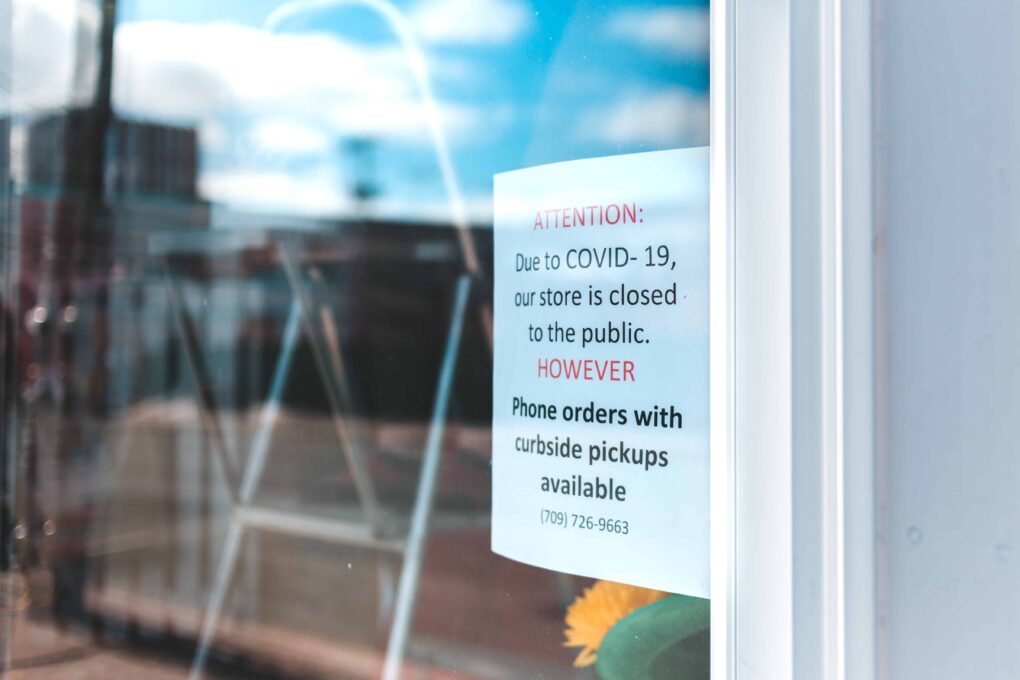Adapting your small business for COVID-19 will be critical to weathering the novel coronavirus pandemic. By now you’ve likely heard the terminology of social-distancing, isolation, and quarantine. Depending on where you live, you may still be under a local or state-wide stay-at-home or shelter-in-place order. These new guidelines and orders are causing ripple effects across the United States economy, and small businesses must adapt the way they conduct business in order to survive the COVID-19 pandemic. While some small businesses are uniquely positioned to boom during the pandemic, not all are so fortunate. So how can your small business shift towards new revenue streams and persist through the COVID-19 pandemic? Read on for resources and tips.
Recession Preparedness
While the proven best way for small businesses to survive economic downturns is to prepare ahead of time, better late than never also holds true. If you have not yet taken proactive steps to recession-proof your business, start today. Forbes provides six best practice strategies for this, including getting a handle on your cash flow as soon as possible and investing in client relationships. Research in the Harvard Business Review strongly suggests that looking beyond layoffs to cut costs – and instead focusing on operational improvements, hour reductions, and furloughs – improves survival odds of businesses in a recession. Additional recession preparation tips are available from the U.S. Chamber of Commerce.
Turning Business Challenges into Solutions
Before creating adaptive solutions for your small business, start by listing the challenges your business faces. This list may include current challenges, as well as challenges you anticipate in the coming weeks or months. Once you have a clear understanding of your business challenges, it’s time to brainstorm solutions. As part of brainstorming business solutions, consider lawyer and author Andrew Sherman’s advice: take inventory of your business assets (such as skills, equipment, supply channels) to identify possible new revenue sources. Leveraging your existing professional network and trade associations can also be helpful here. Connect with industry peers by phone, email, or video conference to exchange information on overcoming challenges presented by COVID-19.
Examples of Adapting Your Small Business for COVID-19
The adaptations small business owners are making are just as diverse as America’s small businesses themselves. In New York City, the Javits Convention Center was turned into a temporary hospital. In Los Angeles, Pages bookstore is hosting virtual book-clubs via video conferencing. In Seattle, Shine Distillery has shifted to producing alcohol-based hand sanitizer. In Richmond, Virginia, advertising agency Familiar Creatures created a campaign and website to connect local customers with struggling businesses through the purchase of gift cards and take-out (Harvard Business School also suggests the sale of gift cards as a way to inject money into your small business).
Across the nation, adapting your small business for COVID-19 has also meant businesses are embracing remote work, e-commerce and delivery. When implementing delivery for your small business, be sure you understand your options of in-house delivery versus third-party delivery, so you can pick the right delivery model for you. Challenge yourself to give the off-premises customer experience the attention it deserves, knowing that focusing on customer experience now positions you favorably for the eventual transition out of the pandemic. And as always, ensure you are in compliance with federal, state, and local regulations that may apply when adapting your small business.
Communicate with Customers – Mindfully
So you’ve changed the way your small business operates to continue serving customers in this challenging time – but how do you get the word out? Utilize the different channels of communication available, making sure the message suits the medium. When communicating with your customers during the pandemic, be especially mindful with your messaging. This means to not overdo it by sending an excessive number of emails to customers. If at all possible, avoid controversy and negative backlash to your business resulting from being seen as exploitative of the pandemic, or insensitive to the ongoing human suffering. MarketingDive has a helpful write-up on how brands are navigating consumer sensitivities around COVID-19 in their advertising, with insights you can apply to your small business case. For additional marketing and communications tips, check out this playbook by Forrester Research.
With a combination of preparedness, creativity, and resilience, small businesses can adapt to the challenges presented by COVID-19.
Additional Small Business Resources
Already in business or thinking about starting your own small business? Check out our various small business resources that will help with adapting your small business for COVID-19 and beyond:
- View our COVID-19 Resources here: COVID-19 Small Business Resources and COVID-19 Industry Resources
- View small business help topics here: Small Business Information Center
- View business reports here: Small Business Snapshots
- View industry-specific research here: Market Research Links
Remember, you can also receive free professional business advice and free or low-cost business training from your local Small Business Development Center!
About the SBDC National Blog
If you have a small business resource or SBDC story you think would make a great feature, please Contact Us.
Photo by Erik Mclean on Unsplash






